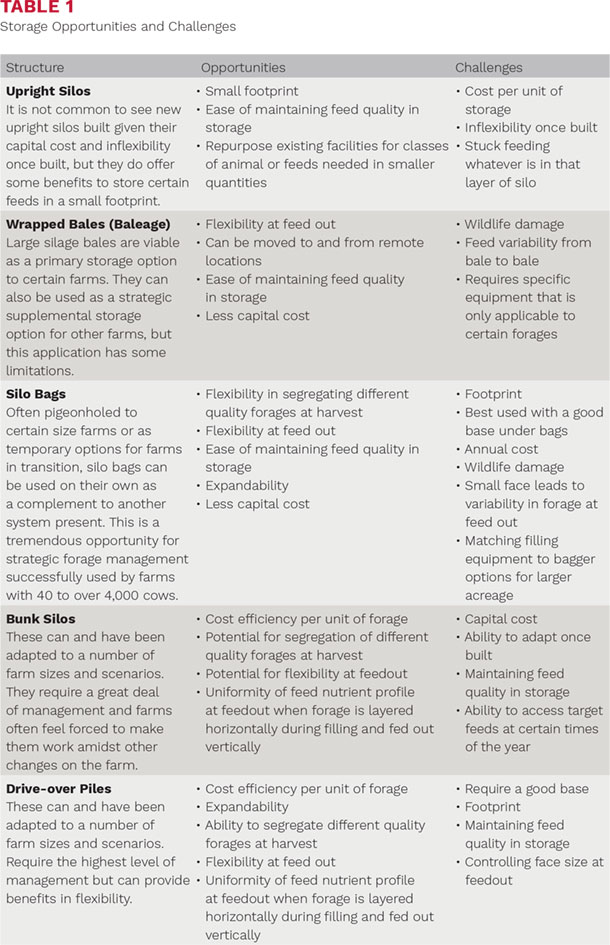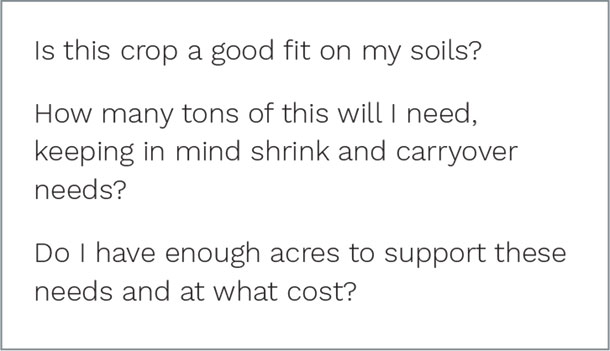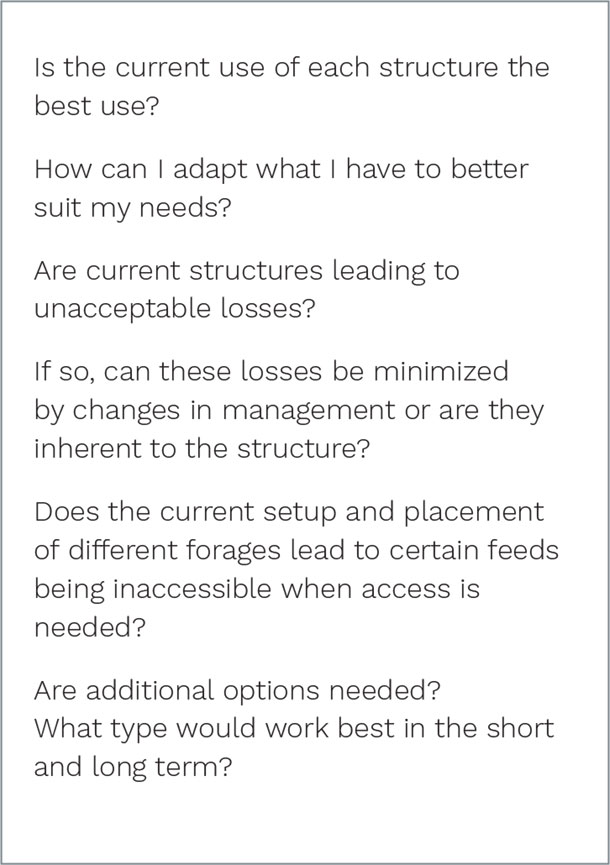The dairy and livestock industries have seen continued advances in options available to improve forage management, from crop species and variety selection, to harvest management, to recognizing the class of animals on the farm that will most benefit from different forage types and qualities.
A shift away from upright silos over the last several decades has largely been driven by the need to store increased quantities of feed and to increase the speed of filling and feeding out. The tradeoff in this is storage systems that provide more efficiency and flexibility present additional challenges to preserve the forage, particularly with horizontal silos (bunks and drive-over piles).
As a result, a number of resources developed focus on how to minimize storage losses. These efforts include strategies to improve packing density, use of inoculants and preservatives, options to cover, and strategies to minimize exposure to oxygen at feed out. All of these remain critical and should continue to be a high priority for every farm.
However, as producers look to get the most out of recent and forthcoming advances to forage management, an area that warrants more discussion is how to store these feeds in a way that optimizes feeding programs.
The ability to develop and maintain the number of storage options necessary to adequately separate forages is a challenge, particularly for farms experiencing change. This challenge is intensified by the fact that it is also an area of the farm where implementing such changes can be very difficult.
Regardless of forage storage structures used by a farm, all available options require a sizable footprint, are often capital intensive, and are fairly rigid in location and capacity. These commonalities often challenge a farm’s ability to adapt their storage options to match the advances made in forage production and feeding programs.
Fortunately, the wide-ranging approaches to operating a farm has fostered the development of many different options for forage storage.
While there are inherent characteristics of certain storage systems that make sense for certain farms, the ability to consider all of the options can help overcome some of the limitations associated with each system. Regardless of farm size and management, a mix-and-match approach warrants consideration and no farm should rule out any storage options.
In developing or updating a storage plan, a number of considerations and ways to attack the planning process depend on current status. The various attributes of commonly available storage options are known by most, but a review of the main points will assist in thinking about how each option may have a place on your farm (Table 1).

Types and quantity of feed required for each animal class
Work with your farm’s nutrition team to develop a list of forages most desirable for each group of animals and the quantities needed. Not every animal benefits from the high quality desired for lactating cows, and when these forages can be targeted to the correct group (dry cows or young stock) their value to the farm is enhanced.
In doing this, keep in mind the need to balance what crops will work best for the animals with your land base and management system. Frequently debated examples include the use of highly digestible crops, such as BMR corn and low-lignin alfalfas. Other important options include the use of grasses (alone or with alfalfa), double-cropping with winter grains for forage, and summer annuals.

The ability of the harvest team to execute the plan needed to harvest at the proper quality is also important. This question will mean different things to different farms but will include labor availability, equipment, timing with other farm activities (i.e., first cutting or manure hauling) and length of time needed to harvest.
Similar to the mix-and-match approach to storage structures, utilizing custom services does not have to be an all-or-nothing strategy. The access to custom harvesting and equipment rentals can facilitate this approach while minimizing capital investments. Targeted use of custom service providers for certain tasks or times of the year can effectively reduce the effect of bottlenecks and achieve desired forage qualities.
Mapping out storage options and needs
A useful exercise for all farms is to evaluate current storage options and strategize what modifications or additions could enhance their storage system. While this exercise is often prompted by the need for additional space, modifications to better meet current needs can pay large dividends.
When considering modifications or additions, look at the feed system in the context of the whole farm layout and potential future growth to avoid investments that will be in the way down the road. Considerations for feed preservation, accessibility and environmental stewardship are also important.

Each farm faces unique challenges and opportunities related to forage storage. No matter what your farm’s feed situation is, all can benefit from re-evaluating and setting a course for improvements. Use a team of key
on-farm personnel and advisors to critically assess the strengths and weaknesses of the current storage system.
An improved forage and feed center will prove productive and will capitalize on other forage management advances, from improved varieties to precision equipment, implemented in the coming years.
Joe Lawrence is a dairy forage systems specialist with Cornell CALS PRO-DAIRY. Email Joe Lawrence.
Ron Kuck is a dairy educator for Cornell Cooperative Extension of Jefferson County. Email Ron Kuck.
This article appeared in PRO-DAIRY’s The Manager in March 2018. To learn more about Cornell CALS PRO-DAIRY program, visit PRO-DAIRY Cornell CALS.






